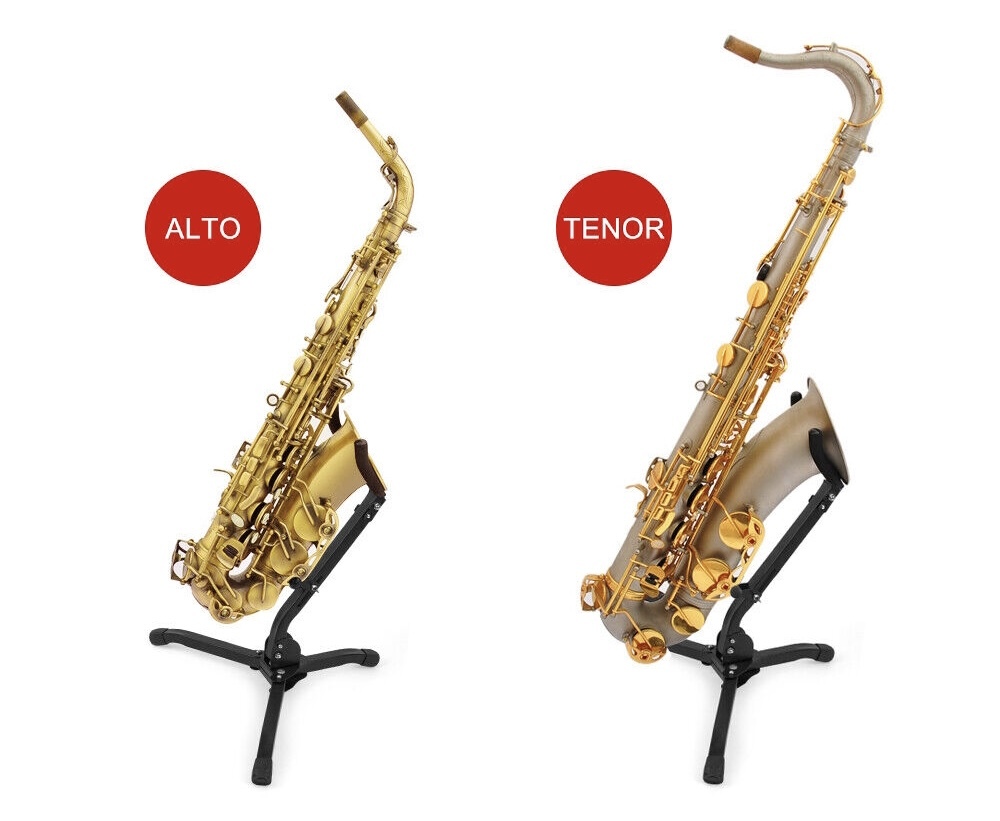
In our previous blog, we have been taking the alto saxophone as an example to introduce and learn, which is actually because the alto saxophone has always been the most commonly used and common type of saxophone. However, different kinds of saxophones have their own charm and characteristics. Recently, many students have asked about saxophones, such as: does it take much to blow tenor saxophones? What is the tone of the tenor saxophone? What style of music is the tenor saxophone better at expressing? Today, Six Months Rebellion Music will give you some directions. I hope you can solve the puzzle after seeing this blog.

The difference between the alto saxophone and the tenor saxophone:
Appearance and tone:
First of all, if we look from the appearance that the tenor saxophone is larger than our common alto saxophone, you can find that the tenor saxophone is longer than the alto saxophone, and the bent neck of the tenor saxophone is in an s-shape curve. At the same time, the alto saxophone is an E-flat instrument, while the tenor saxophone is a B-flat instrument, so we will find that the tone of the tenor saxophone is lower than that of the alto saxophone, and the tone is not as bright as that of the alto saxophone, so many musicians who study pop music or jazz music like its tone very much.

Breath:
Many students who are new to saxophone will probably have the same question when they see the tenor saxophone: does this saxophone need a lot of breath to support? Will it be tiring to play? In fact, every saxophone has a relatively exhaust range. Like the alto saxophone, generally speaking, it requires the use of high-speed air flow in the high-pitched area, while the requirements in other areas are slightly lower. According to the characteristics of the tenor saxophone, it does not have too many requirements for the high pitch area. On the contrary, it needs to give a lot of sufficient breath in the low pitch area, because its low pitch area needs a lot of breath.

If you are still worried about the breathing of the tenor saxophone, you can be more careful when choosing the reed. If you feel that breath is a great burden, you can choose a slightly thinner reed to play. You can choose the reed suitable for your playing state according to your needs.
Voice:
There is a great difference between the tone of the tenor saxophone and that of the alto saxophone. Its voice is like that of a middle-aged man singing in a low voice. Even its high range is not as mellow and full as that of the alto saxophone. Therefore, the tone of the tenor saxophone is generally a highly narrative instrument. It is also its time-honored timbre characteristics. It can be said that it is the most abundant musical language in the saxophone. Its performance techniques are also relatively complex, and the performance difficulty will be slightly higher.
Main style:
Because of the rich musical words and performance of the tenor saxophone, it has attracted the attention of many musicians. In classical music, the saxophone of the tenor saxophone is generally used in bands or ensemble, and it is rarely used in solo. You can click the link below to enjoy the performance of the tenor saxophone in classical music:
J. S. Bach. Fugue in G minor by a sax quartet
In jazz music, musicians are particularly fond of the musical expression ability and timbre of the tenor saxophone, so it has always been performed mainly by solos in jazz, and many jazz saxophone performers will also play the tenor saxophone as the main instrument. In contemporary times, the use of the tenor saxophone in jazz is stronger than that of the classical music genre. This is also because the unique timbre charm of the tenor saxophone can more directly reflect the freedom and leisure of jazz music, so its position in the jazz industry can not be shaken. You can click the link below to enjoy the performance of the tenor saxophone in jazz music:
Mark Guiliana Jazz Quartet – Full Session – 9/27/2017 – Paste Studios – New York, NY
Famous performer:
Coleman Hawkins is the first important tenor saxophone performer in the history of jazz. The tone of the tenor saxophone played by Coleman Hawkins is hoarse and full of charm and redefines everyone's view on the tone of the tenor saxophone. His saxophone playing career lasted for 40 years, and his playing skills have been praised. Later, performers such as Stan Getz, Sonny Rollins, Michael Brecker and Sonny Stitt also strengthened the position of the tenor saxophones in the public's mind.
Coleman Hawkins – Soul Blues




